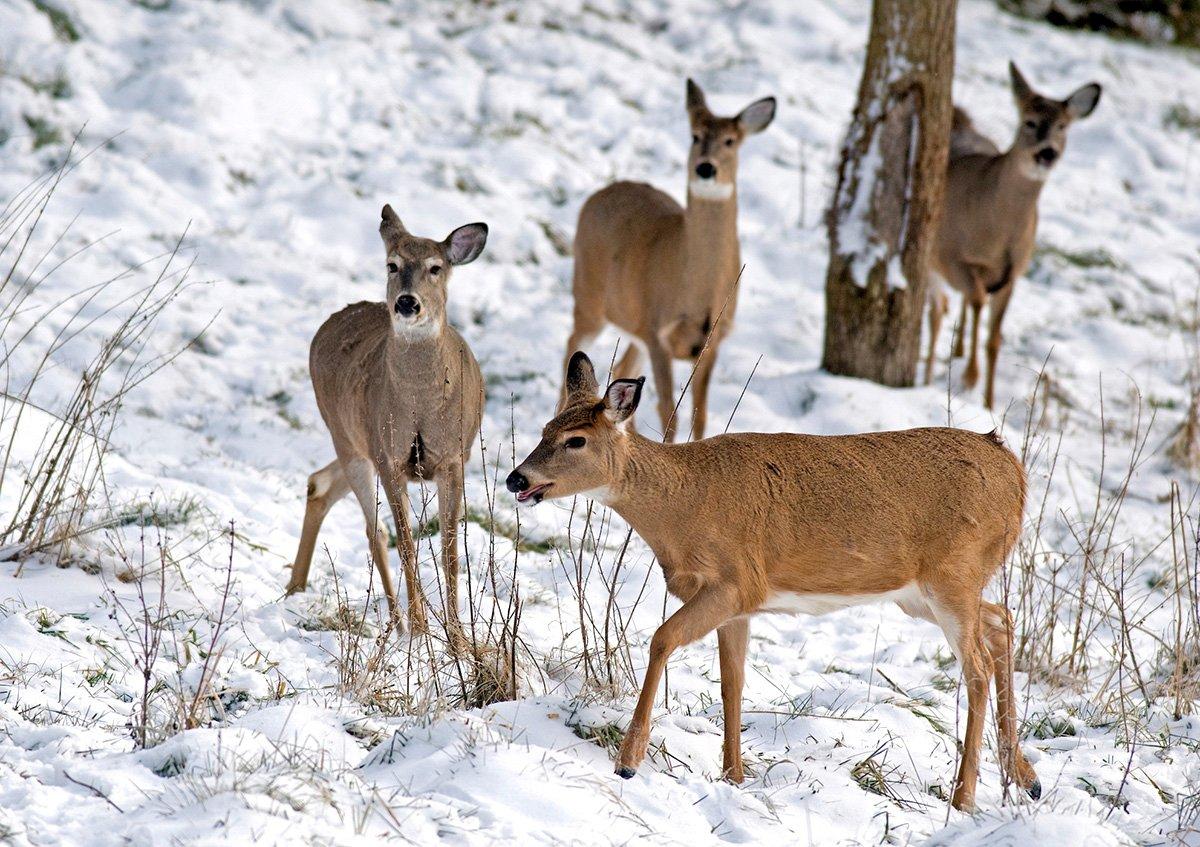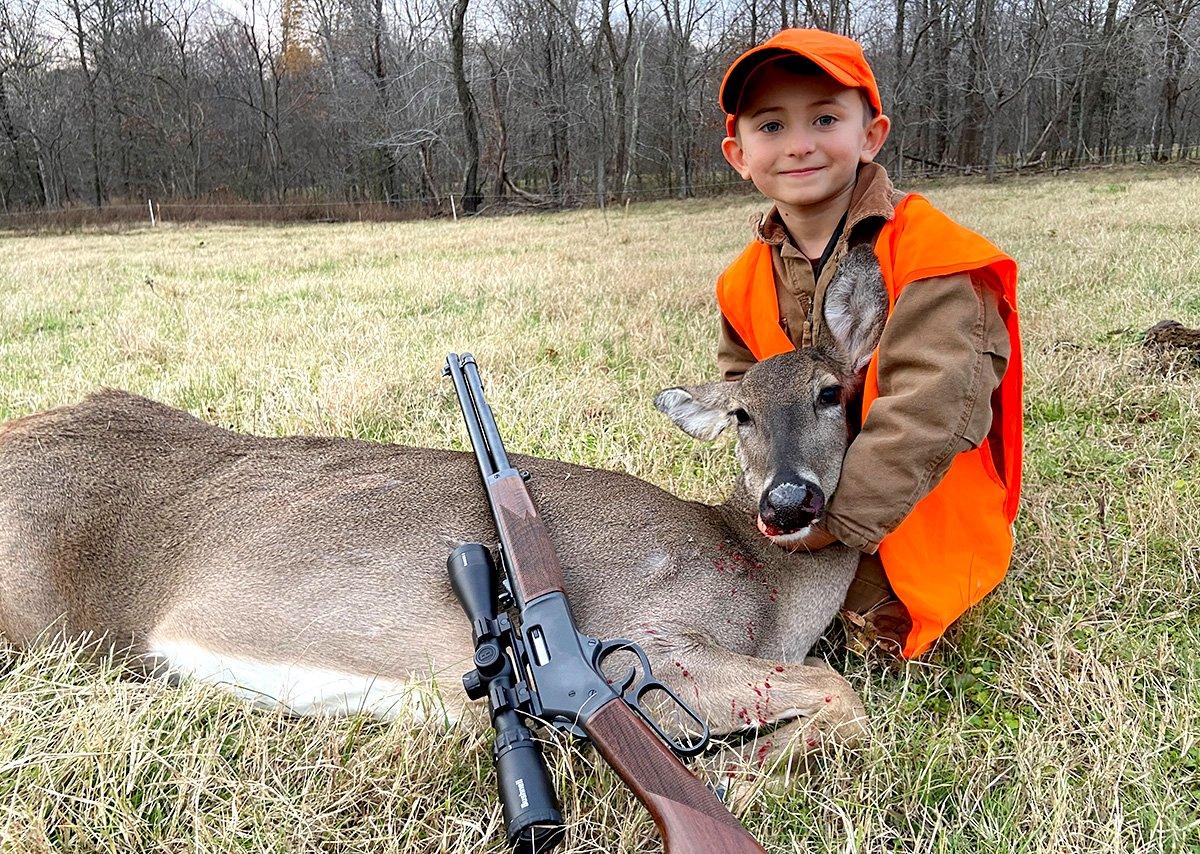If you want to kill the best-tasting deer in the woods, follow this advice from our Timber 2 Table chef and lifelong meat hunter
There was a time, back before deer hunting became a contest for inches of antler, when hunters went afield with the primary goal of filling freezers with delicious venison. A healthy supply of wild meat meant good food on the table that didn't have to be purchased at the local supermarket.
Now don't get me wrong: I love tricking a mature buck as much as anyone. But filling the freezer is still a fine reason to hunt. Getting the best venison possible starts with shooting the right deer, then continues with proper field care. Here's what to know about killing the best-tasting deer in the woods.
Start at a Tender Age
What makes one deer better table fare than another? Let's start with age. The best-tasting, most tender deer on your hunting property is probably this year's fawn. By late fall, in the North and Midwestern states anyway, a fawn born in the spring of the year will go 70 to 90 pounds on the hoof, field-dress 50 to 60 pounds, and give you about 20 pounds of some of the most tender venison you'll ever stick a fork in. You can steak out pretty much every cut on one and be satisfied with the result; no need for grinding here.
But it takes several deer of that size to stock a freezer. Unless you are hunting in an area in need of a serious reduction in deer numbers, shooting and processing multiple yearlings will probably be more work than most hunters want to invest. For my money, that makes the best deer for the table a 1 1/2-year-old doe. Sure, you could shoot a buck of the same age, but like I said earlier, I like matching wits with old bucks and they can't get old if they die as a spike or forky. I concentrate on does for dinner.
A year-and-a-half-old doe is perfect for a few reasons. First, they haven't had time to get tough yet. Just like beef cattle, most of which are processed between 12 and 22 months old, a doe this age has had time to get some size to her, but the meat is still at its prime for tenderness. Next, some young does didn't get bred as fawns late in their first winter, meaning you have a good shot at getting one that hasn't been nursing a fawn all spring and early summer.
Worried that targeting young does might have a negative impact on herd numbers in your area? Don't be. Taking younger does and letting older does walk can maintain or actually improve your overall deer numbers. Hank Forester with the National Deer Association explains why.
Young does are less likely to raise a fawn to adulthood and less likely to have multiple fawns their first time, so in theory if you were hunting for meat and wanted to keep the population more stable you'd target young does, says Forester. Taking young does from the herd leaves more winter browse available for more experienced does, making them more likely to be able to raise twin fawns to adulthood.
Hunt the Right Time of Year
All other things being equal, a deer killed earlier in the season will taste better than one killed late. For one thing, their diets change as the season progresses. Early-season deer have spent their spring and summer fattening up on crops, green browse, and leafy greens, with a diet that may run as high as 70% water, says Forester. Personally, I think deer taste better if you kill them before they eat a bunch of acorns because acorns taste terribly tannic and you are what you eat, right?
Phillip Culpepper, Realtree pro staff and host of Hunt Club with Phillip Culpepper, also believes diet can play a big role in the flavor of venison. Some of the best-tasting deer I have ever eaten was from Montana, he says. The deer there in the area we hunted ate alfalfa nonstop, and that meat was exceptional.
Early-season does also tend to be less active. Home patterns are stable and relatively small. As long as they have food, water, and bedding cover, early-fall does are homebodies. As the rut approaches, these same does start to get pushed around by bucks. As the heart of the rut draws close, these does get downright hounded by bucks. They're often chased for miles, causing stress and a general buildup of lactic acid in the meat, neither of which improves flavor.
(Don't Miss: 5 Things to Know About Muzzleloader Accuracy)
If you do decide to shoot a young buck for the table, time of year is especially important. Young bucks will taste better before the rut kicks in. A 1 1/2-year-old buck during the rut is like a high school kid at a first boy-girl party, full of feelings he doesn't quite understand but is nevertheless trying to sort out. During Kentucky's recent firearm deer season, my wife and I watched the same forkhorn walk past multiple stand locations several times per day over a two-week stretch. By the time the season was winding down, he looked as if he could star in a television commercial loop of malnourished animals with Sarah McLachlan music playing in the background. I can promise you that you'd be better off trying to eat your boot than that little buck in mid-November.
Proper Field Care and Processing
Even if you kill the perfect deer early in the season, not taking the right steps leading up to the table will result in a less than satisfying meal. Conversely, even the rankest of old bucks can be turned into delicious meals if you handle them correctly.
A couple years ago I shot a 5 1/2-year-old buck from [Georgia] and grilled it — it was amazing. My mother has never liked the taste of deer meat in her life and she ate that buck for supper and breakfast the next morning, Culpepper says.
The best-tasting venison starts before you ever pull the trigger. Try to take a deer that is relaxed and calm. Standing deer make for precise shot placement, meaning your deer is more likely to die quickly without running an extended distance. Quick recovery is particularly important in warm weather.
Culpepper prefers his deer to drop after the shot. I love some backstraps and tenderloin on the grill. If the deer was lights-out pretty quick, I like it. With bad shots, a lot of people say the adrenaline makes the meat tough, he says.
While flavor changes with extended dry aging, I don't notice much change in tenderness past 48 hours.
Once your deer is down, the battle against bacteria begins. Take care when field-dressing to keep the meat as clean and free of dirt and stomach contents as possible. Once your deer is gutted, get the deer skinned and the meat cooled down to 41 degrees Fahrenheit as soon as possible to stop bacteria growth that can ruin the meat. Unless outdoor temperature conditions are perfect, that means either getting your deer quartered in an ice-filled cooler or hanging in a walk-in. If you go with the cooler method, keep the drain plug opened and the cooler tilted slightly so that water drains as the ice melts. The goal is to keep the meat cold but not standing in water.
(Don't Miss: 7 Serious Field-Dressing Mistakes)
Next up is the process of aging the meat. Immediately after a deer dies, it begins to go through rigor mortis. You've seen it. Maybe you shot a deer at daylight and didn't pose for grip-and-grin photos until everyone else in the group had finished hunting for the morning. That deer was probably so stiff that you had a hard time getting it positioned just right for a good picture. That's rigor mortis. It happens partially because, while alive, the cells that make up the muscle have a constant flow of calcium ions through the cell walls to help the muscle relax. Upon death, that flow stops, causing the muscles to contract and stay that way. If you cut up your venison while it is in this state, it's going to be tougher than leather.
How long does rigor mortis last? Usually 12 to 48 hours. For this reason, I like to age my deer a minimum of two days before processing. If I have access to a walk-in cooler, I prefer to go as long as seven to 10 days before cutting up deer to allow the meat to release excess moisture and concentrate flavor. While flavor changes with extended dry aging, I don't notice much change in tenderness past 48 hours.
When the time comes to process your deer, trim as much fat as possible from the meat. Unlike beef or pork, venison fat tends to be strongly flavored. That flavor only intensifies in the freezer. Trimming it off will vastly improve the finished flavor of your venison recipes.
If you aren't processing your deer yourself, you should be. But if you are using a processor, the best time to choose who cuts up and packages your deer was months ago. Check out local deer processors. Swing by during opening weekend of firearms season if you can, to see how they handle a rush of business. Make sure deer aren't left outside for hours in warm temperatures. Ask if they process and package one deer at a time so that you know you are getting back the venison you dropped off. Are things clean? Trust your nose. All meat processors smell like meat, but they shouldn't smell rancid. If your eyes water and your first reaction is to cover your mouth and nose when you walk in, keep looking. Ask what type of packaging they use and if each cut will be labeled.
Once you get your venison home, check the packaging before you put it in the freezer to make sure it's not open, exposing the meat to the dry freezer air. Freezer burn is an issue best avoided. Repackage or quickly use any suspect packages before damage occurs.
Finally, match your recipe to your deer and the cut you are cooking. If you try grilling a steak from the bottom round of a mature buck, you better have a sharp knife and a strong jaw. Take that same roast and braise it at low temperatures with plenty of liquid, and you can eat it with a spoon. If you kill multiple deer per season, label each package with not only the cut contained, but with the deer it came from. Use cuts from younger deer for hot and fast methods like pan-frying or grilling, and save cuts from older deer for burger and low-and-slow cooking methods.
I cook a lot of venison for people. I often hear people remark that they've tried venison in the past and didn't care for the flavor. When I serve them the finished product, they can't believe it's deer meat. Follow these tips and your venison will be a hit with everyone at your table.
(Don't Miss: Bourbon Buttermilk Fried Deer Tenderloin)













